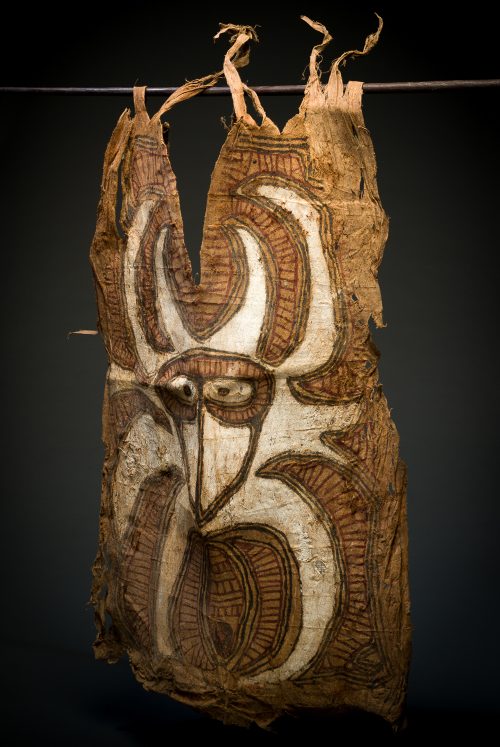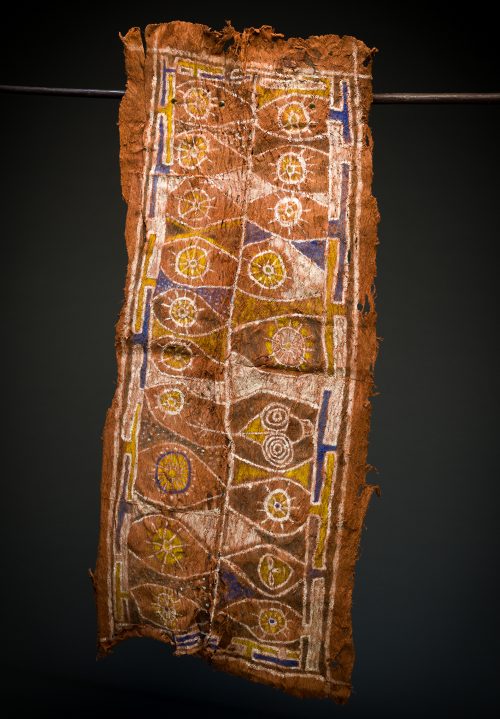O-20 Painted Tapa ”Nakanai”

O-20 Painted Tapa ”Nakanai”
East New Britain, PNG.
There is very little information about Nakanai painted tapa. They are invariably described as used in funeral rights, which were elaborate and lasted many days.
a) Large painted tapa, Nakanai. Early 20thC. This piece is one of the earliest large Nakanai tapas ever collected, by Elsa Dunmall, who spent 2 years living in New Britain 1923-1924. These were used as shrouds over the body, or possibly as capes; there is not enough reliable information to be sure. The tassles on the upper end suggest perhaps a cape, but no such tassles exist on any in museum collections ( unless trimmed by the collectors ). The face is stretched outwards in the centre to make the tapa quite 3-dimensional. It entered the collection of her son, William Dunmall (1928-1996), who is best known for a large Australian Aboriginal collection. The son had several other Nakanai tapa all attributed to the New Britain plantation owner, Edward Tull in 1960s His large collection of mainly Aboriginal artefacts was displayed at the Urimbirra Museum, Harvey Bay, Queensland. After his death in 1996, the collection was inherited by William Dunmal’s niece.
b) Smaller painted tapa, Tolai. Mid-20thC. This also is related to funeral ceremonies, with detailed segmented images. One motif appears to be of a DukDuk spirit. On the back Dunmall has written: “Duk Duk burial shroud, Rabaul. from Mr Tull, Cooroy. Q 1964.”
a) 146 x 76 x 8 cm b) 114 x 47 cm
sold

